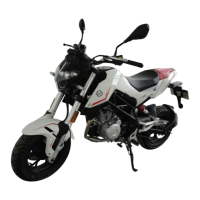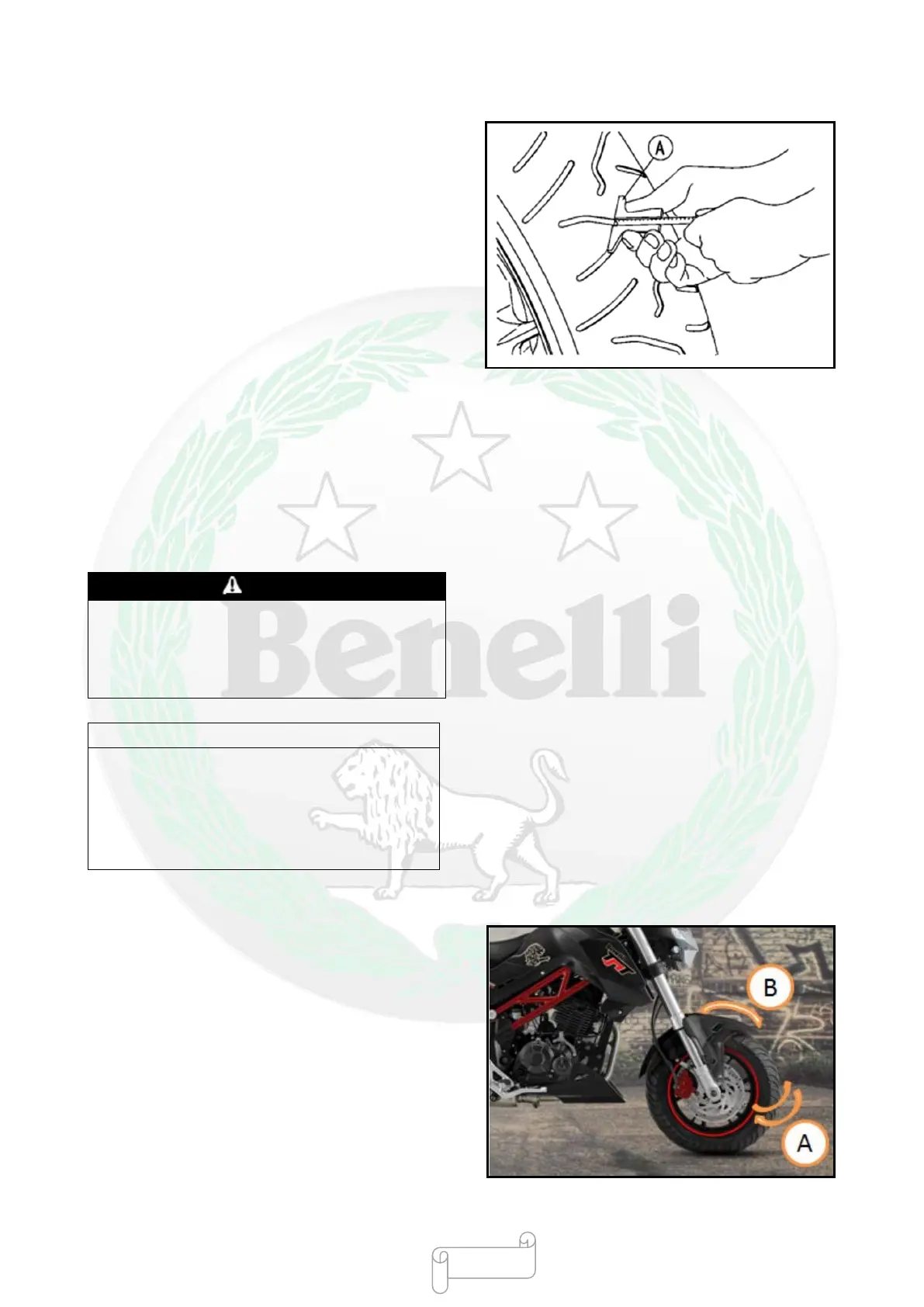Checking Wear Situations of Thread
As the tread wear is more and more serious, it is
more likely to cause tire blowout. It is estimated that
90% of tires will be damaged in the last 10% of service
life of tire (90% wear). If the tire is used until it is
grinded smoothly, the money cannot be saved and
safety issues may be caused.
●Measure the tread depth in the middle of the tread
w
ith a dept
h meter [A]. As the tire is worn unevenly,
the measurement shall be carried out in different parts.
★
If any value measured are below the use limit, the
tire must be replaced (see “Disassembling/ Installing
Tire” in the “Wheel/Tire” chapter).
Thread depth
Standard:
Front wheel: 3.8 mm
Rear wheel: 4.8 mm
Use limit:
Front wheel: 1.6 mm
Rear wheel: 2.0 mm
In order to ensure the safety and stability of
tire, it is necessary to replace the current tire
with the recommended standard tire and inflate
the tire according to the standard air pressure.
○The minimum thread depth is specified in most of
the countries: please make sure to comply with
that!
○Check the wheel and balance it after the tire is
replaced.
Checking Whether Wheel Bearing is Damaged
●Use the jack to lift the front wheel up from the floor
(see “Disassembling/ Installing Front Wheel
“Wheel/Tire” chapter).
●Rotate the handle to the rightmost or leftmost side.
●
Shake the wheel frame to both sides [A] with both
hands to check whether there is axial clearance in the
front wheel bearing.
●Rotate the front wheel [B] gently to see whether the
wheel can be rotated smoothly, whether it is difficult to
rotate or whether there is unusual resistance or noise.
★
If it is found that the wheel is difficult to rotate and
there is resistance or noise, remove the front wheel and
- 66 -

